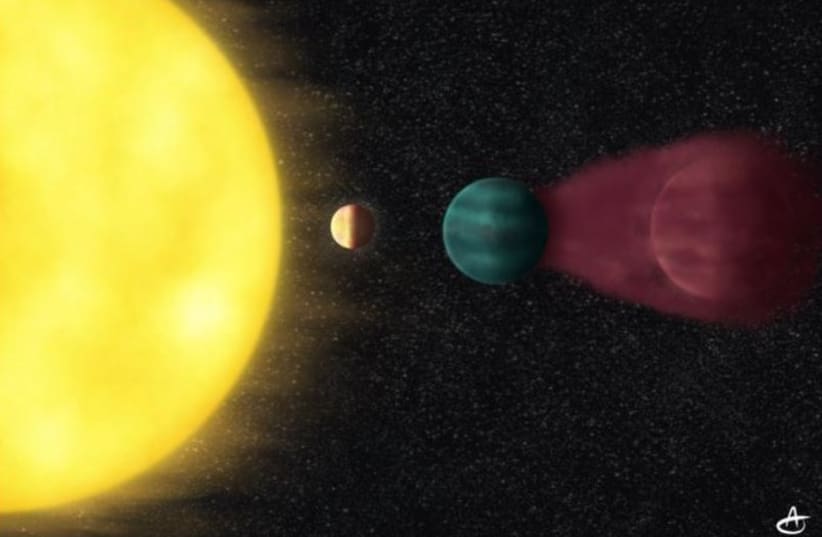Earth-sized exoplanet discovered in ‘our solar backyard’ by international team
“It’s a useful planet because it may be like an early Earth,” says Soares-Furtado.
A planet about the size of our Earth that revolves around a sun similar to ours has been discovered by a NASA fellow from the University of Wisconsin at Madison and her international team. Because it’s closer and younger than any other planet of that size that has yet been identified, it is regarded as a unique opportunity to study how planets evolve.
Young terrestrial worlds are critical test beds to constrain prevailing theories of planetary formation and evolution.
The team presented its discovery – the third planet detected in this multiplanet system. The new planet named HD 63433d, which revolves around a star called HD 63433, was described in a new study published this week by The Astronomical Journal.
The publication was entitled “TESS Hunt for Young and Maturing Exoplanets – An Earth-sized Planet Orbiting a Nearby, Solar-like Host in the 400 Myr Ursa Major Moving Group.”
Dr. Melinda Soares-Furtado, who will begin work as an astronomy professor at the university in the fall, and recent UW–Madison graduate Benjamin Capistrant, now a graduate student at the University of Florida, co-led the study with co-authors from around the world. She said that among the population of confirmed exoplanets with precisely measured age estimates, 50 of them are estimated to be younger than 500 million years ago.
"Like an early Earth"
“It’s a useful planet because it may be like an early Earth,” says Soares-Furtado. It’s so close to its star that it completes a trip around it every 4.2 days. “Even though it has a very small orbit, we can use follow-up data to search for evidence of outgassing and atmospheric loss that could be important constraints on how terrestrial worlds evolve,” Soares-Furtado added. “But that’s where the similarities end – and end dramatically.”

Based on its orbit, the astronomers are relatively certain HD 63433d is tidally locked, which means one side is perpetually facing its star.
That side can reach a brutal 1,260 degrees Celsius and may flow with lava, while the opposite side is forever dark.
Although HD 63433 is roughly the same size and star type as our sun, at about 400 million years old, it’s not even one-tenth our sun’s age.
The star is about 73 light years away from our sun and part of the group of stars moving together that make up the constellation Ursa Major which includes the Big Dipper. On a clear night in Madison,” the astronomer noted, “you could see [HD 63433] through a good pair of binoculars.”
The study’s authors are collaborating on a planet-hunting project called THYME. In 2020, they used data from NASA’s Transiting Exoplanet Survey Satellite (TESS) to identify two mini-Neptune-sized planets orbiting HD 63433. Since then, TESS took four more looks at the star, compiling enough data for the researchers to detect HD 63433d crossing between the star and the satellite.
The team said the newly discovered planet is uniquely situated for further study. Its peppy young star is visible from both the Northern and Southern hemispheres, increasing the number of instruments like the South African Large Telescope or WIYN Observatory in Arizona that can be trained on the system.
The star is orders of magnitude closer than many Soares-Furtado has studied, possibly affording opportunities to develop new methods to study gases escaping from the planet’s interior or measure its magnetic field.
“This is our solar backyard, and that’s exciting,” Soares-Furtado concluded. The team wants to know what sort of information a star this close and with such a crowded system around it can provide. “How will it help us as we move on to look for planets among the maybe 100 other, similar stars in this young group it’s part of?”
PLEASE RECOMMEND THIS PAGE & FOLLOW THE SPUTNIKS ORBIT AT HTTPS://DISQUS.COM/HOME/FORUM/THESPUTNIKSORBIT-BLOGSPOT-COM



No comments:
Post a Comment